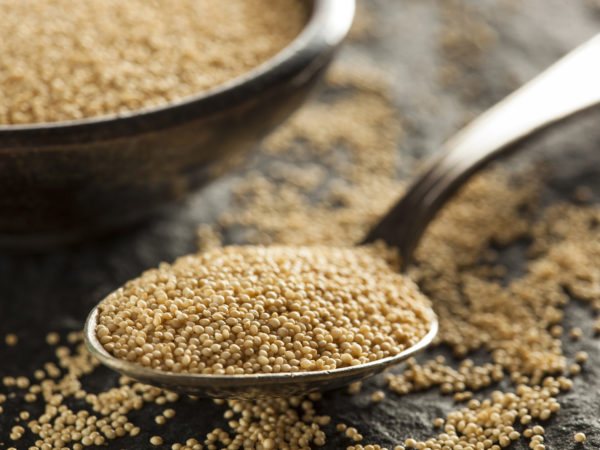Cooking With Whole Grains

Whole grains – full of protein, fiber, vitamins, minerals and low-glycemic carbohydrates – are an important part of my Anti-Inflammatory Food Pyramid, but I always specify “true” whole grains. This means when using or cooking with whole grains, the individual grains must be intact or cracked into a few large pieces, not ground in flour. Few nutrition guides make this distinction, but it is vital – with true whole grains, the outer bran and germ layers remain to encase the starchy endosperm within. This means it takes longer for digestion to occur, which slows the conversion of starch to sugar, keeping you fuller longer and preventing spikes in blood sugar that can lead to insulin resistance – a major driver of obesity, high blood pressure and type 2 diabetes.
Don’t be fooled by “whole-grain” products such as whole wheat flour (or bread made from it), which have a glycemic index nearly as high as that of refined flour. Incorporating whole grains into an anti-inflammatory diet is not just about choosing “whole-grain” labels; it’s about selecting grains that are truly whole and minimally processed. Grains that have been pulverized into flour, whether “whole” or not, have a significantly expanded starchy surface area available to digestive enzymes, and cause blood sugar levels to spike dramatically. In contrast, a well-balanced anti-inflammatory diet emphasizes true whole grains that have not been overly processed.
In addition to regulating blood sugar levels, the fiber in whole grains improves cholesterol ratios and aids the digestive system, aligning well with the principles of an anti-inflammatory diet. A recent government study even linked the fiber found in whole grains specifically to longer life (a lower risk of death at any age from common fatal conditions such as cardiovascular, respiratory and infectious diseases and possibly even cancer).
A serving of true whole grains – embellished or plain – makes a healthy side for almost any meal and is a solid component of an anti-inflammatory diet, but they are also wonderful in soups, stews, salads and stuffings. Alternatively, try any of the following grains as breakfast porridge (in the same way you would enjoy oats), cooked a little longer if necessary. Serve with fruit, cinnamon and/or a healthy sweetener such as a bit of maple syrup.
However you serve your whole grains, know that you are making a good choice for your heart, waistline, blood sugar levels and food budget.
General tips on cooking with whole grains:
- For most grains, rinse prior to cooking to remove any debris (rolled oats and kasha are exceptions). It’s particularly important to rinse quinoa, which has soap-like components called saponins that can taste bitter and have a laxative effect. To rinse, place in a bowl of cold water and swish around with your fingers, refilling the water once or twice. Drain in a fine-meshed strainer.
- The instructions given for each grain here are for stovetop preparation. But you can also use a rice or pressure cooker for any whole grain instead of a pot on the burner; just know that the cooking times and liquid ratios provided may need to be adjusted.
- To reduce cooking time for longer-cooking grains, pre-soak them for a few hours or overnight (with the exception of quinoa, which has a bitter coating that can be absorbed if soaked; rinse quinoa briefly instead).
- Except where stirring or uncovering is suggested, don’t remove the lid while cooking grains, as it disrupts the steaming process.
- If you are watching your sodium intake, feel free to cook your grains in unsalted water. Otherwise, one-fourth teaspoon of sea salt goes a long way (add salt when you combine grain and water in the pot). Alternatively, try using vegetable broth as the cooking liquid, or for a more exotic flavor, a 50/50 mixture of water and juice. You can even add a splash of wine or dried herbs.
- It’s generally a good idea to purchase grains in bulk, except where otherwise noted. Some grains such as rice and oats are found at typical supermarkets, but you will have better luck finding more obscure grains, such as teff and amaranth, at your local natural foods store. For all grains, opt for organic varieties from the bulk bins of health food stores whenever possible – they have higher turnover rates, which improves the likelihood of freshness.
- Store in tightly sealed containers in the pantry (or another cool, dry, dark place). Even better: store in the refrigerator if you have room. Unless otherwise noted, properly stored grains can last up to one year.
The grain-by-grain guide below offers everything you need to know about cooking with whole grains, including historical and cultural heritage, common varieties, nutritional value, storage tips, healthful recipes, and standard cooking instructions. Try these grains as part of a healthy anti-inflammatory diet plan:











